We all know the year-end giving season is essential to providing the funds that nonprofits need to carry out their missions. That’s why the “ask” is so important to charities.
The flip side of asking people to part with their hard-earned cash is actually showing them how you’re putting that money to good use—what we know as stewardship. Showing donors their gifts in action affirms that they've made a wise decision to invest in your organization. Stewardship builds trust, which leads to better retention and further investment.
As simple as it seems, too many organizations get stuck in the ask-and-repeat model. Successful nonprofits build meaningful donor journeys that express gratitude for donations and demonstrate proof of the gift’s impact.
It’s all about building a relationship with donors—they’ve shown you love, now it’s your turn. And one of the best ways to do so is through email (especially e-newsletters). With e-newsletters, you can share the amazing stories of your mission, the latest news about how their donation is helping, and information about your awesome programs.
And here’s an added bonus: E-newsletters can still bring in donations. We’re not talking about blurring the line with e-appeals, just creating opportunities for gifts. It's all about convenience—even if you're not asking, you're making it easy for the donor to give right then and there. And chances are, some will, because they'll be so inspired by the stories you share.
Here are a few tricks that you might want to test as you look at improving your e-newsletters:
1. Heat map tracking
You can start improving your e-newsletter content and layout by understanding which areas are drawing the most attention from readers. The simplest way to accomplish this is to break your emails down into sections and track the data accordingly.
Here’s a good example:
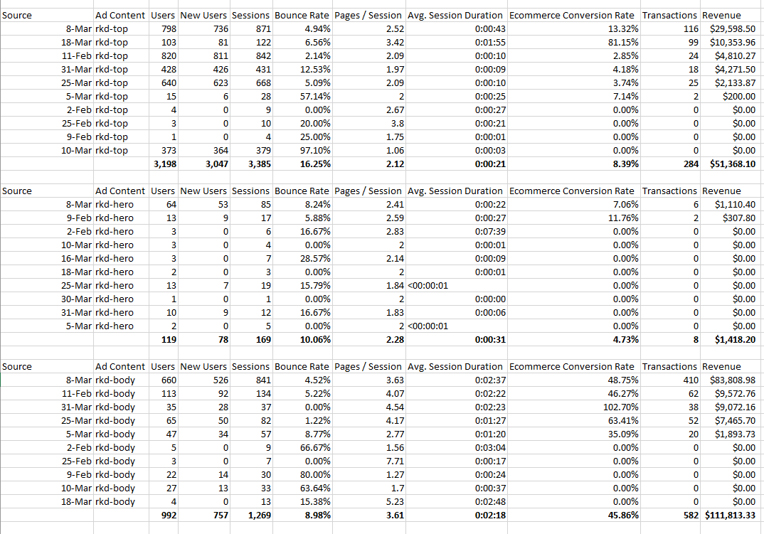
We all know the top of an email gets more eyeballs than the bottom, but this example shows that the body section clearly gets the most donations.
Take a close look at your e-newsletters to see how donors are engaging with them. For example, you may find a clear point where attention drops off a cliff. That might indicate that your emails are too long.
You might be surprised by the insights you uncover.
2. Soft ask
Some organizations have found success in sending a message from the CEO with a soft opportunity to give. A soft ask can actually outperform a hard ask, if done correctly.
It’s a subtle difference between a direct-response style of “Please donate” to more of an invitation to learn more or be part of the solution.
Below is an example from Los Angeles Mission. Note that the letter never actually asks for a donation.
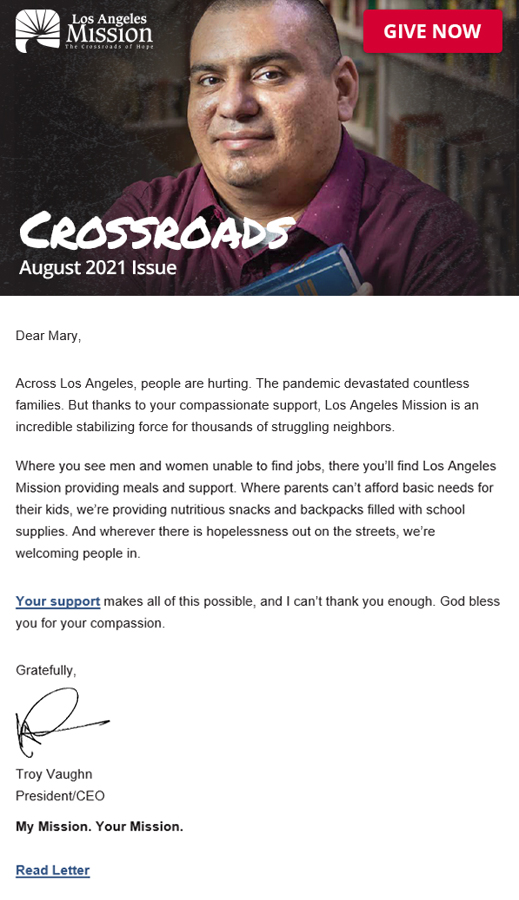
3. More dynamic invitations to “Read More”
In today’s busy world, it’s getting tougher and tougher to grab people’s attention. That’s why every subtle change can be the difference between a click and a scroll past. And every click can make the difference in getting a gift.
Another area to consider testing is being more creative in your links for deeper engagement. Instead of ending each section of your e-newsletter with “Read More,” try more dynamic ways to draw readers to your website.
Here are two examples:
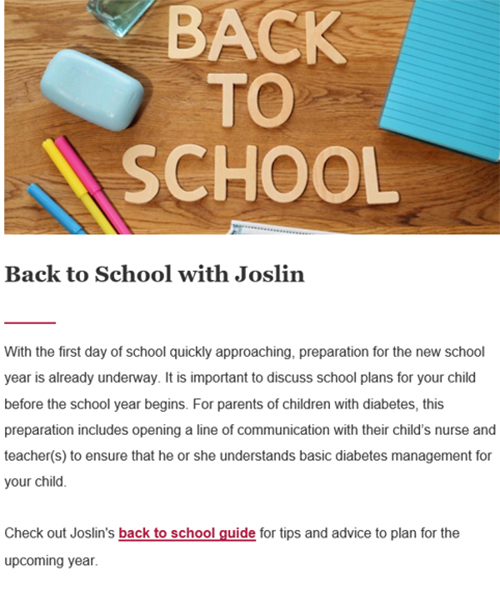
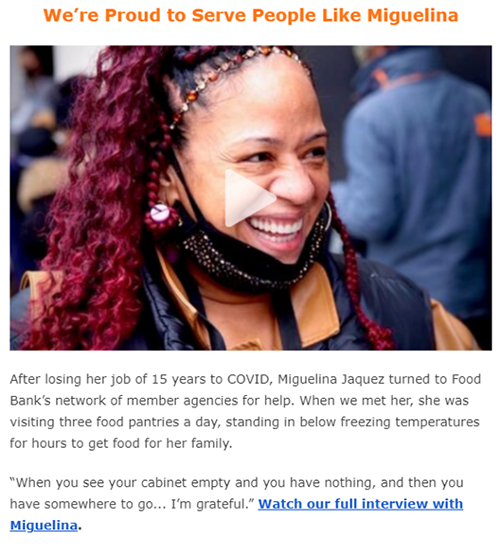
Each could have simply used “Read More” or “Learn More” to wrap up the copy section, but these are much more compelling to the reader. (Don’t you want to click?)
4. Close with a timely update
Nonprofits constantly have events and campaigns, either ongoing or on the horizon. So, use your e-newsletter to share this news. After all, these are things happening in the moment that readers should be informed about.
This is an opportunity to get your reader involved and deepen their relationship with your organization in a way that times back to the seasonality of the newsletter and the overarching story at this time.
Here’s how that looks:

The example above is newsworthy, because it's about getting school supplies to foster children in time for the start of the school year. Other ideas include:
- It's Metastatic Breast Cancer Week! Tune into our Impact Series to learn more.
- It's Hunger Action Month! Check out our volunteer opportunities all around the community.
- It's kitten season! Our shelter is nearing capacity, apply to become a foster today.
You get the idea.
5. Tease the full newsletter
You may need to change the way you think about e-newsletters here. After all, it’s not a requirement to put the entire e-newsletter in the email.
Think of the email as the announcement that the newsletter is ready, and offer a sample before linking to the full newsletter on your website.
In marketing, you generally don’t want to put too many obstacles between a user and what you want them to see. You may lose some of the e-newsletter audience who won’t click through, but the ones who do click will be on your website—one step closer to your donation form.
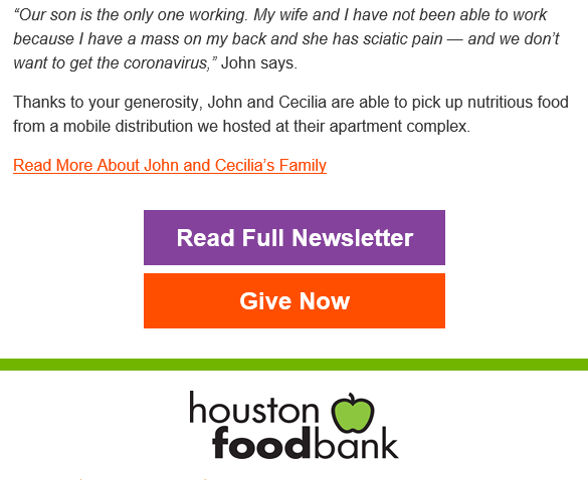
As you wrap up your year-end giving and start thinking about ways to boost your digital fundraising next year, try some of these tactics. You won’t be disappointed!






Leave a comment: